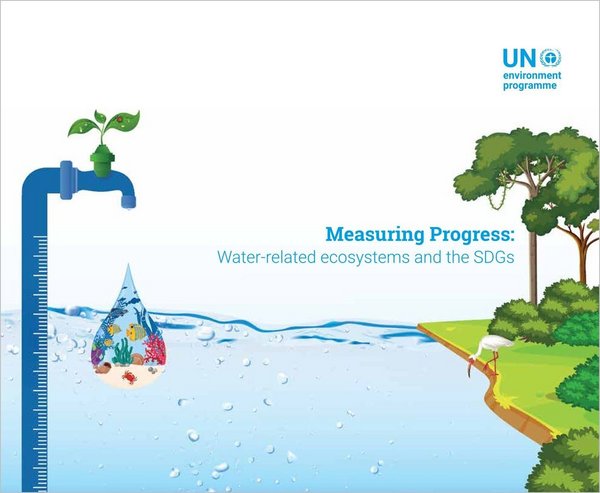- Share this article
- Subscribe to our newsletter
Water-related ecosystems and the SDGs
The report Measuring Progress: Water-related ecosystems and the SDGs released by the UN Environment Programme (UNEP) in March 2023 and focusing on freshwater ecosystems, calls on governments to further strengthen their statistical capacity in relation to the environment and to promote the use of non-traditional data sources – such as big data and citizen science – to fill the data gap.
The latest available data for the 92 environment-related SDG indicators shows that the world is not on track to achieve the environmental dimension of the SDGs by 2030. However, 38 per cent of the 92 indicators signal environmental improvement – clearly up on the 28 per cent of 2020. At the same time, 21 per cent of indicators saw negative or no change, and 41 per cent lack data.
Water is central to the achievement of all 17 SDGs, and data is key to making sound policy decisions; meeting the goals will require an integrated approach that recognises how these challenges — and their solutions — are interrelated.
Integrated policies such as integrated water resources management, which are based on the interlinked nature of land and water-based ecosystems, should be prioritised over narrow policies that treat water issues in silo, the report states. This would allow for suitable water infrastructure in urban areas, provide mitigation of air, water and soil pollution, and protect biodiversity and food security as well as the raw materials that fuel economic growth.
The SDG framework has a total of 17 goals, 169 targets and 231 unique indicators— 92 of these are environment related. While 59 per cent of these indicators possessed data in 2022, there is a need to improve our use of non-traditional data, whether through innovative use of big data or Earth observations and satellite data, to close the gap and support the development of informed policy-making to protect our planet.
The report also represents one of the first attempts to use multivariate statistical analysis to explore how ecosystems are impacted by environmental changes and policy at multiple scales. As such, this work represents a step forward in using analytical methods to explore well-known and lesser-known interlinkages between freshwater and marine-related ecosystems indicators and other environmental, social and economic factors. This demonstrates the need for more innovative approaches to developing global data sets and to refining global water indicators.
(UNEP/ile)





Add a comment
Be the First to Comment